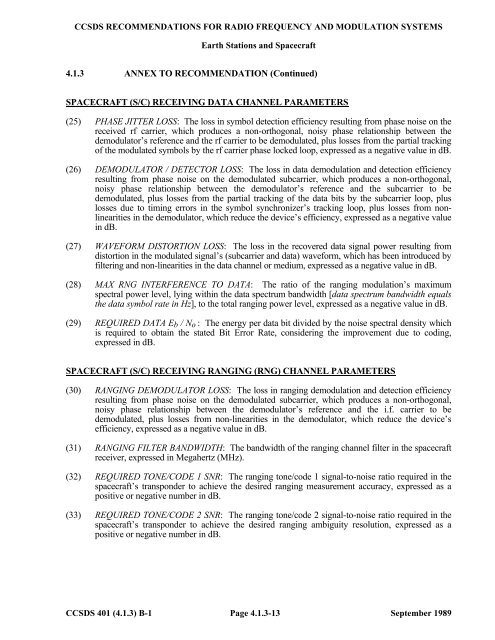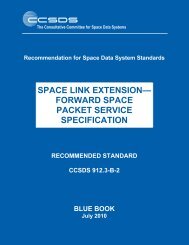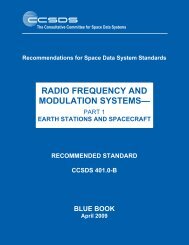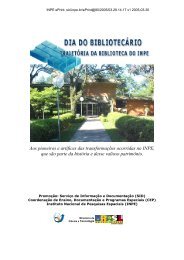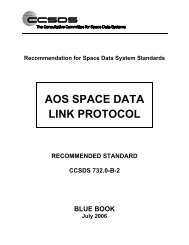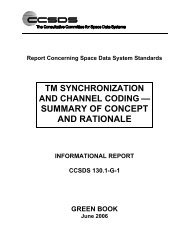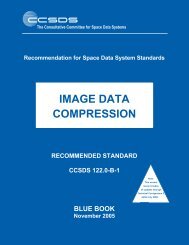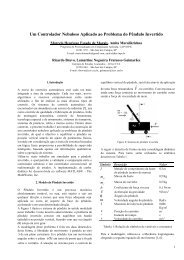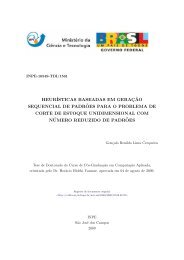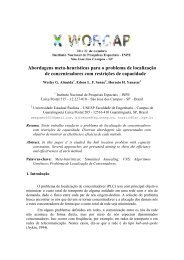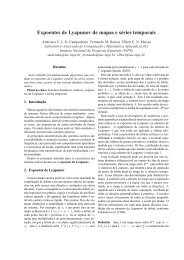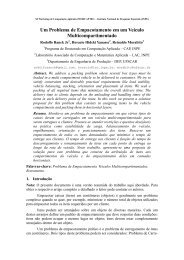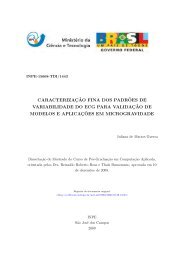CCSDS 401.0-B-21.pdf - mtc-m18:80 - Inpe
CCSDS 401.0-B-21.pdf - mtc-m18:80 - Inpe
CCSDS 401.0-B-21.pdf - mtc-m18:80 - Inpe
Create successful ePaper yourself
Turn your PDF publications into a flip-book with our unique Google optimized e-Paper software.
<strong>CCSDS</strong> RECOMMENDATIONS FOR RADIO FREQUENCY AND MODULATION SYSTEMSEarth Stations and Spacecraft4.1.3 ANNEX TO RECOMMENDATION (Continued)SPACECRAFT (S/C) RECEIVING DATA CHANNEL PARAMETERS(25) PHASE JITTER LOSS: The loss in symbol detection efficiency resulting from phase noise on thereceived rf carrier, which produces a non-orthogonal, noisy phase relationship between thedemodulator’s reference and the rf carrier to be demodulated, plus losses from the partial trackingof the modulated symbols by the rf carrier phase locked loop, expressed as a negative value in dB.(26) DEMODULATOR / DETECTOR LOSS: The loss in data demodulation and detection efficiencyresulting from phase noise on the demodulated subcarrier, which produces a non-orthogonal,noisy phase relationship between the demodulator’s reference and the subcarrier to bedemodulated, plus losses from the partial tracking of the data bits by the subcarrier loop, pluslosses due to timing errors in the symbol synchronizer’s tracking loop, plus losses from nonlinearitiesin the demodulator, which reduce the device’s efficiency, expressed as a negative valuein dB.(27) WAVEFORM DISTORTION LOSS: The loss in the recovered data signal power resulting fromdistortion in the modulated signal’s (subcarrier and data) waveform, which has been introduced byfiltering and non-linearities in the data channel or medium, expressed as a negative value in dB.(28) MAX RNG INTERFERENCE TO DATA: The ratio of the ranging modulation’s maximumspectral power level, lying within the data spectrum bandwidth [data spectrum bandwidth equalsthe data symbol rate in Hz], to the total ranging power level, expressed as a negative value in dB.(29) REQUIRED DATA E b / N o : The energy per data bit divided by the noise spectral density whichis required to obtain the stated Bit Error Rate, considering the improvement due to coding,expressed in dB.SPACECRAFT (S/C) RECEIVING RANGING (RNG) CHANNEL PARAMETERS(30) RANGING DEMODULATOR LOSS: The loss in ranging demodulation and detection efficiencyresulting from phase noise on the demodulated subcarrier, which produces a non-orthogonal,noisy phase relationship between the demodulator’s reference and the i.f. carrier to bedemodulated, plus losses from non-linearities in the demodulator, which reduce the device’sefficiency, expressed as a negative value in dB.(31) RANGING FILTER BANDWIDTH: The bandwidth of the ranging channel filter in the spacecraftreceiver, expressed in Megahertz (MHz).(32) REQUIRED TONE/CODE 1 SNR: The ranging tone/code 1 signal-to-noise ratio required in thespacecraft’s transponder to achieve the desired ranging measurement accuracy, expressed as apositive or negative number in dB.(33) REQUIRED TONE/CODE 2 SNR: The ranging tone/code 2 signal-to-noise ratio required in thespacecraft’s transponder to achieve the desired ranging ambiguity resolution, expressed as apositive or negative number in dB.<strong>CCSDS</strong> 401 (4.1.3) B-1 Page 4.1.3-13 September 1989


